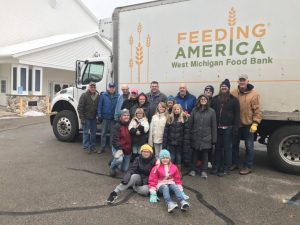Introduction
As the world grappled with the COVID-19 pandemic, the hunger crisis in the United States reached unprecedented levels. The economic repercussions of the pandemic had a profound impact on food insecurity, pushing millions of Americans into the abyss of hunger. While the immediate crisis has subsided, the legacy of COVID-19 continues to shape the landscape of food insecurity in America. In this article, we will explore the lasting impact of the pandemic on food insecurity and its implications for ongoing hunger relief efforts. From economic disparities to evolving relief strategies, we embark on a journey to understand the enduring legacy of COVID-19 and the challenges it poses in the fight against hunger.
The Pandemic’s Economic Toll
The economic impact of the COVID-19 pandemic was swift and severe. Lockdowns, business closures, and job losses resulted in financial instability for millions of Americans.

The Surge in Food Insecurity
The economic turmoil led to a surge in food insecurity. Families who had never sought food assistance found themselves in long lines at food banks.
Emergency Responses
In response to the crisis, emergency relief efforts were mobilized. These initiatives included expanded food assistance programs, financial aid, and increased support for food banks.
The Pandemic’s Legacy
While the acute phase of the pandemic has subsided, its legacy persists in several ways.
Economic Disparities
Economic disparities have widened. Low-income communities, especially people of color, continue to bear the brunt of the pandemic’s impact.
Long-Term Unemployment
Long-term unemployment remains a significant concern. Individuals who lost their jobs during the pandemic struggle to regain stable employment.
The Role of SNAP
The Supplemental Nutrition Assistance Program (SNAP) played a critical role during the pandemic. It continues to be a lifeline for many families.
Food Insecurity among Children
Children were disproportionately affected by food insecurity during the pandemic. Schools and organizations continue to provide meals for those in need.
Innovations in Hunger Relief
The pandemic prompted innovations in hunger relief efforts. Online food distribution, mobile food pantries, and technology-driven solutions have become integral in providing aid.
Policy Changes and Advocacy
Policy changes and advocacy have gained momentum. Calls for raising the minimum wage, addressing income inequality, and strengthening social safety nets have become central to the conversation.
The Road Ahead
As America grapples with the enduring legacy of COVID-19, several challenges must be addressed.
Sustainable Relief Strategies
Long-term relief strategies are crucial. Relying on emergency relief measures is not sustainable, and a comprehensive approach is needed.
Addressing Economic Disparities
Addressing economic disparities is fundamental to combatting food insecurity. Policies that reduce income inequality and provide job opportunities are essential.
Strengthening Food Assistance Programs
Strengthening and expanding food assistance programs, such as SNAP, is vital. These programs provide a safety net for vulnerable populations.
Community Engagement and Support
Community engagement and support are powerful tools. Local initiatives, volunteerism, and advocacy at the grassroots level play a significant role in hunger relief.

Conclusion
The legacy of the COVID-19 pandemic continues to shape the hunger crisis in America. The enduring economic disparities, long-term unemployment, and the role of food assistance programs underscore the need for comprehensive and sustainable relief strategies. As America navigates the road ahead, addressing these challenges requires a collective effort from government, organizations, and communities. In understanding the pandemic’s legacy and its implications for ongoing hunger relief efforts, we can work towards a future where food insecurity is no longer a persistent issue for millions of Americans.










